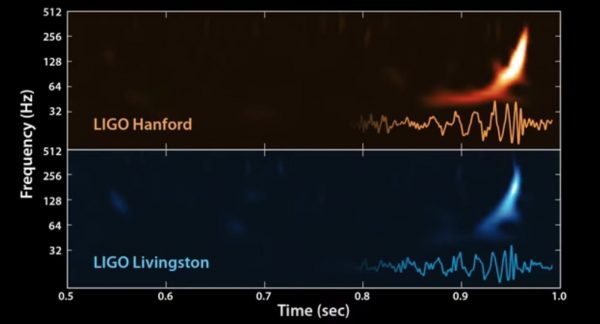Gravitational Waves Are Real
It started off with a tweet at 4:39 am on the 26th of September, 2015 Australian Western Standard Time (AWST) from theoretical physicist Dr Lawrence Krauss, stating:
Rumour of a gravitational wave detection at LIGO detector. Amazing if true. Will post details if it survives
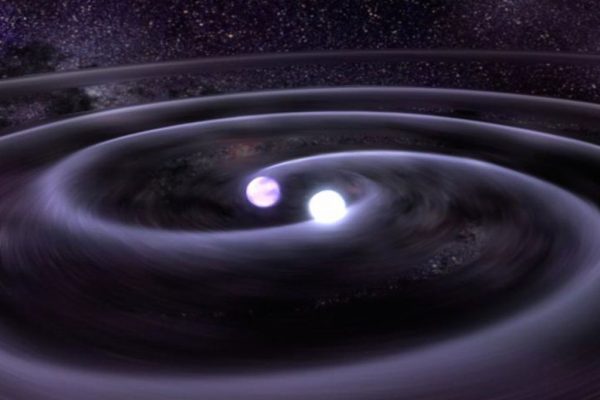
With that he caused excitement in the world and also faced harsh criticism from scientists who had seen these claims many times before, the last claim being the BICEP2 announcement made on 17th of March, 2014. His critics said these rumours were premature, especially because fake signals are occasionally inserted into LIGO’s data to test the equipment as well as the analytical process. LIGO is the Laser Interferometer Gravitational-Wave Observatory funded by the United States, the United Kingdom, Germany and Australia.
However, at 11:30 pm on the 11th of February, 2016 AWST and 100 years after being predicted by Albert Einstein, LIGO made the announcement many had been waiting for 40 to 50 years. They had discovered the first known binary black hole system and had detected the gravitational waves created as the two black holes merged (see Figure 1).
So you might be thinking, “what are gravitational waves?”. They are ripples in the fabric of space-time, the 4th dimension in our universe, which spread as waves travelling outward from a source, just like the waves you see propagating in the water when you throw a stone into a calm lake.
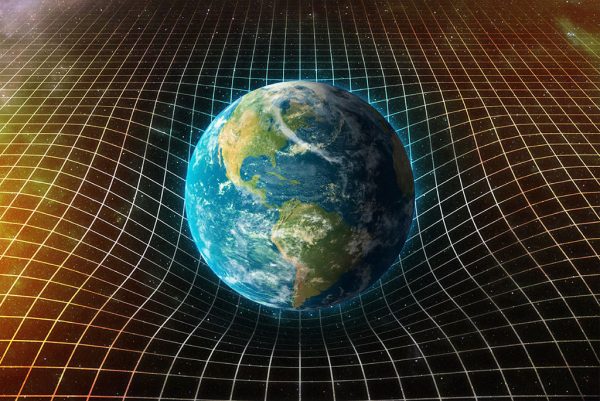
Here in this image you can see part of Albert Einstein’s Theory of General Relativity which he theorised in 1915. The key idea from that theory is that gravity is actually caused by the warping and curving of spacetime (the lines) by an object (The Earth).
In 1916 Einstein went even further and theorised that if you had two neutron stars or black holes, objects that distort spacetime immensely, orbiting each other then you should get ripples propagating from them through spacetime, the gravitational waves.
LIGO is able to detect gravitational waves because as they ripple through space, they cause space and any object they pass through to stretch and compress. Now don’t worry if you’ve seen videos of the Earth stretching and compressing violently, as those videos have been heavily exaggerated to show the rippling effect. In reality, the gravitational waves would only stretch and compress The Earth by the diameter of an atom.
If they’re so small, how did LIGO detect these waves? The equipment in LIGO Livingston (near Baton Rouge, Louisiana) and LIGO Hanford (near Richland, Washington State) in the USA involves Lasers, “Splitters”, pipes and mirrors (see Figure 3). It starts with a laser beam being shone towards a splitter in the centre of the detector, where the beam splits into two beams to make a cross shape.
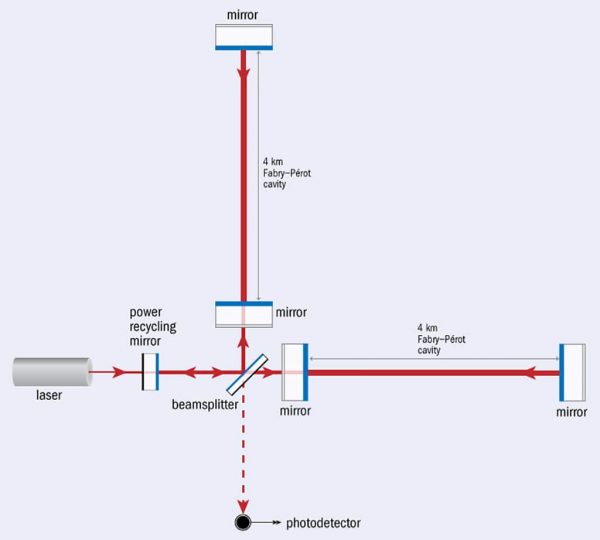
The beams travel downpipes just over 4 kilometres long that have had all air purged from them to block any sound and other environmental influences. The beams hit a mirror at the end of their pipe and are sent back to the splitter where they “commingle” and create a special pattern called an “interference” pattern, monitored by a photodetector. Figure 4 shows brighter patches where the laser beams are working together and darker patches where the beams are cancelling each other out.
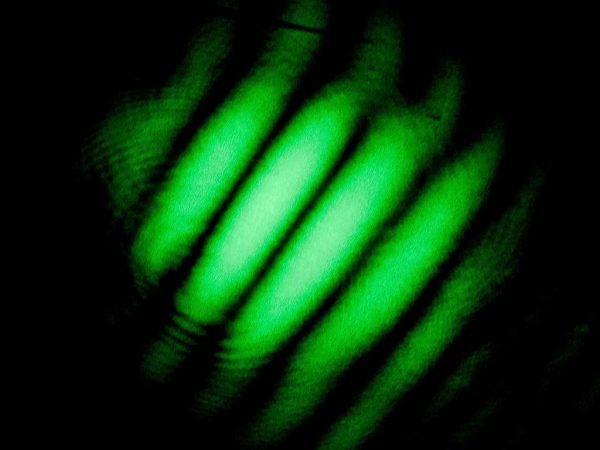
The pattern is very dependent on the distance the beams have to travel so if a gravitational wave comes along and stretches and compresses either or both of the beams, the interference pattern will change and the super-sensitive photodetector confirms you have just detected gravitational waves.
Great – now how can we use these gravitational waves to study the Universe? The great thing about gravity is that you can’t block it as you can light. Light from space can be blocked from reaching our eyes by things like dust and gas. Gravity, and gravity waves, can go into places light just can’t penetrate so we could possibly learn how black holes combine or maybe even the formation of the Big Bang. Just like using an explosion on one side of the planet and a seismograph on the other side to echo map the inside of The Earth, we can use gravitational waves to measure objects in space we can’t see.
Finally the really special thing about these waves is that they sometimes vibrate at a certain frequency that turns them into sound, so that the human ear can actually hear the gravitational wave. These sounds are able to tell us things about the universe that we have no other way of discerning and will be the future of how we study the universe. With the In-Principle Approval for a LIGO observatory in India this year, which was actually first offered to Australia but turned down due to very high costs, we are signalling the dawn of a new branch of astrophysics
